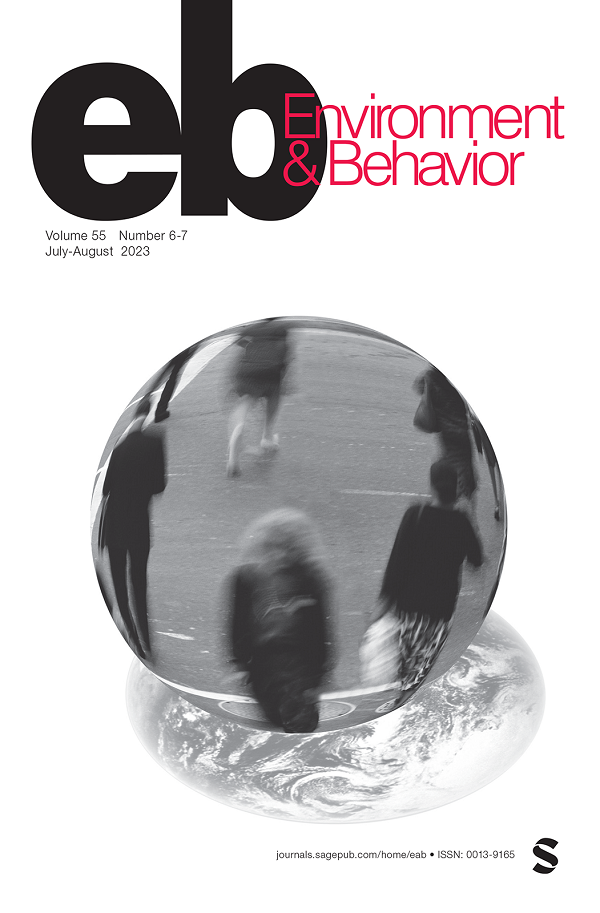Nature-Related Odors Influence Stress and Eating Behavior: A Laboratory Experiment With Pine and Grass Volatiles
IF 4.6
2区 心理学
Q1 ENVIRONMENTAL STUDIES
引用次数: 0
Abstract
Before and after Trier Social Stress Test, 91 participants (18–50 years, 67% women) inhaled one odor during 10 min: Scots pine, grass (=cis-3-hexenol), or control (=demineralized water). Group differences were tested on repeated measurements of stress (affect reports, salivary cortisol and heart rate variability) and eating behavior (food choice and craving). Both nature olfactory exposures improved some stress outcomes. Both were associated with lower cortisol in non-stress conditions, but only grass odor was more beneficial for negative affect decrease after stress. No effect on heart rate variability was seen. Some contradictory findings were present for eating behavior. In non-stress situations, grass odor increased vegetable preference, while the pine odor group had higher sweet high-fat snack preference. Grass odor was also reported to induce healthier food choices. During stress recovery, both pine and grass odor groups had higher preference to sweet high-fat snacks.与自然有关的气味影响压力和饮食行为:松树和草挥发物的实验室实验
在Trier社会压力测试前后,91名参与者(18-50岁,67%为女性)在10分钟内吸入一种气味:苏格兰松、草(=顺-3-己烯醇)或对照(=去矿化水)。通过反复测量压力(影响报告、唾液皮质醇和心率变异性)和饮食行为(食物选择和渴望)来测试组间差异。两种自然嗅觉暴露都改善了一些应激结果。在非应激条件下,两者都与较低的皮质醇有关,但只有草味更有利于应激后负面情绪的减少。没有观察到对心率变异性的影响。在饮食行为方面出现了一些相互矛盾的发现。在非应激情况下,草气味组增加了对蔬菜的偏好,而松气味组有更高的甜味高脂肪零食偏好。据报道,草的气味也会促使人们选择更健康的食物。在应激恢复过程中,松气味组和草气味组对甜的高脂肪零食都有更高的偏好。
本文章由计算机程序翻译,如有差异,请以英文原文为准。
求助全文
约1分钟内获得全文
求助全文
来源期刊

Environment and Behavior
Multiple-
CiteScore
13.30
自引率
1.80%
发文量
13
期刊介绍:
Environment & Behavior is an interdisciplinary journal designed to report rigorous experimental and theoretical work focusing on the influence of the physical environment on human behavior at the individual, group, and institutional levels.
 求助内容:
求助内容: 应助结果提醒方式:
应助结果提醒方式:


